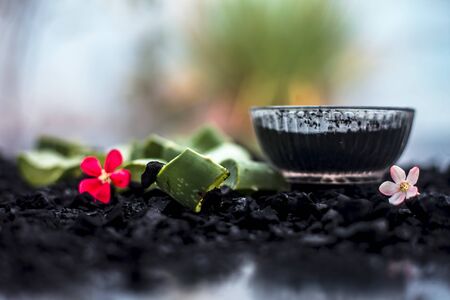Introduction to Janma Rashi in Indian Cultural Context
Janma Rashi, commonly known as the Moon sign, holds a special place in the fabric of Indian astrology and cultural traditions. Unlike the Western zodiac system that relies on the Sun’s position, Janma Rashi is determined by the placement of the Moon at the exact time of an individual’s birth. This lunar-centric approach reflects the deep-rooted belief in India that emotions, intuition, and mental well-being are closely tied to the Moon’s influence. In Vedic astrology, Janma Rashi is not just a marker for astrological predictions; it also plays a significant role in shaping a person’s identity, behavioral tendencies, and life path. From naming ceremonies (Namkaran) to marriage compatibility (Kundali Milan), Janma Rashi is intricately woven into rituals and daily life. It provides insights into one’s strengths, vulnerabilities, and potential challenges, serving as a guiding light for personal growth and holistic wellbeing. Understanding your Janma Rashi is considered essential for making informed decisions about health, relationships, career, and even spiritual pursuits within the Indian context.
2. Understanding Grah Dasha and Its Influence
In the context of Indian astrology, Grah Dasha plays a pivotal role in shaping ones life journey and overall wellbeing. Grah Dasha refers to the planetary periods that are calculated based on the precise position of planets at the time of birth, which is determined by an individual’s Janma Rashi (Moon sign). This system, rooted in Vedic astrology, is highly regarded across India for its profound impact on various aspects of life, including health, career, relationships, and spiritual growth.
What is Grah Dasha?
Grah Dasha is a sequential cycle of time periods ruled by different planets (Grah). Each planet governs a specific duration in a person’s life and brings unique influences according to its nature and placement in the natal chart. The most popular method for calculating these planetary periods is the Vimshottari Dasha system, which allocates a fixed number of years to each planet as per ancient astrological texts.
Calculation of Grah Dasha
The calculation begins with identifying the Janma Nakshatra (birth star) at the moment of birth. Based on this, the starting Dasha lord is determined, followed by the sequence and duration of subsequent Dashas. The main planets involved include:
| Planet (Grah) | Years in Vimshottari Dasha | General Influence |
|---|---|---|
| Sun (Surya) | 6 years | Vitality, authority, health issues related to heart or bones |
| Moon (Chandra) | 10 years | Mental peace, emotions, mother’s health |
| Mars (Mangal) | 7 years | Energy, courage, aggression, blood disorders |
| Mercury (Budh) | 17 years | Intellect, communication, nervous system health |
| Jupiter (Guru) | 16 years | Growth, wisdom, liver function, prosperity |
| Venus (Shukra) | 20 years | Sensual pleasures, creativity, reproductive health |
| Saturn (Shani) | 19 years | Karma, discipline, chronic diseases or delays |
| Rahu (North Node) | 18 years | Karmic lessons, illusions, unpredictable health patterns |
| Ketu (South Node) | 7 years | Liberation, detachment, spiritual ailments or breakthroughs |
The Impact of Grah Dasha on Life Events & Health in Indian Context
The influence of each Grah Dasha is interpreted through its unique energy and its relation with one’s Janma Rashi. For instance, Shani Dasha is often associated with challenges and lessons that test resilience—an idea resonant in Indian culture through stories of Saturns trials. On the other hand, Guru Dasha is celebrated as a period for knowledge and prosperity. Many people consult their family astrologer or Jyotish Acharya during critical Dashas to understand upcoming changes and seek remedies such as Ayurvedic Panchakarma for holistic balance. Thus, awareness of one’s ongoing Grah Dasha helps individuals make informed choices about wellness practices rooted in Ayurveda and traditional Indian wisdom.

3. Ayurvedic Panchakarma: Ancient Roots and Modern Relevance
Panchakarma, a cornerstone of Ayurvedic medicine, traces its origins back thousands of years to the Vedic traditions of ancient India. Deeply woven into Indian culture, Panchakarma comprises five primary therapeutic procedures designed to purify the body and restore balance among the three doshas—Vata, Pitta, and Kapha. The process is not just a series of treatments but a spiritual and physical journey rooted in the holistic principles that define Ayurveda.
The Foundations of Panchakarma in Indian Heritage
Panchakarma’s rituals are deeply linked to Indian customs, rituals, and seasonal cycles. Traditionally, families sought these therapies during seasonal transitions—especially at the onset of monsoon or spring—to remove toxins (Ama) accumulated from diet, lifestyle, and environmental influences. The treatments are meticulously tailored to ones Janma Rashi (moon sign) and prevailing Grah Dasha (planetary periods), reflecting a uniquely Indian approach where cosmic rhythms align with bodily health.
Holistic Healing: Beyond Physical Cleansing
In the Indian context, Panchakarma extends beyond physical detoxification. It is considered an act of resetting the mind, body, and spirit—a necessity for maintaining wellness amidst the demands of modern life. By addressing imbalances identified through one’s natal chart and astrological influences, Panchakarma aids in harmonizing both internal energies and external circumstances. This synergy is especially relevant today as urban Indians increasingly seek holistic alternatives that honor traditional roots while meeting contemporary health challenges.
Enduring Relevance in Modern India
With growing awareness about preventive health and well-being, Panchakarma has seen a resurgence across India’s metropolitan cities and rural heartlands alike. Its relevance now lies not only in ancient wisdom but also in its adaptability to address stress, chronic diseases, and lifestyle disorders exacerbated by rapid modernization. As more individuals consult their Janma Rashi and Grah Dasha for personalized wellness plans, Panchakarma stands out as a bridge between timeless healing and present-day needs—offering a uniquely Indian pathway to comprehensive wellbeing.
4. Connecting Janma Rashi & Grah Dasha with Ayurveda
In the Indian tradition, wellbeing is not just a physical state but a delicate balance of the body, mind, and spirit. The ancient sciences of astrology (Jyotish) and Ayurveda have long been intertwined, with many Vaidyas (Ayurvedic physicians) using Janma Rashi (moon sign) and Grah Dasha (planetary periods) to guide personalized wellness plans—especially Panchakarma therapies. This synergy arises from the belief that both cosmic energies and bodily constitution influence health outcomes.
Synergy Between Astrological Insights & Ayurvedic Principles
Janma Rashi reveals the core tendencies and vulnerabilities of an individual according to their birth chart, while Grah Dasha indicates the current planetary influences shaping one’s life phase. Ayurveda, on the other hand, uses Prakriti (individual constitution) and Vikriti (current imbalance) to tailor health interventions. By integrating these systems, practitioners can enhance the effectiveness of Panchakarma by aligning treatments with both astrological timings and doshic needs.
How Janma Rashi & Dasha Cycles Influence Panchakarma
Panchakarma—a deeply purifying process—can yield better results when scheduled in harmony with favourable planetary periods and aligned with one’s moon sign. Below is a simplified table showing this relationship:
| Janma Rashi | Doshic Tendency | Favourable Dasha for Detox | Panchakarma Focus |
|---|---|---|---|
| Mesha (Aries) | Pitta-Kapha | Sun/Mars Periods | Liver & Blood Purification |
| Karka (Cancer) | Kapha-Vata | Moon/Jupiter Periods | Lymphatic Drainage & Emotional Release |
| Tula (Libra) | Vata-Pitta | Venus/Mercury Periods | Skin & Hormonal Balance |
| Vrishchika (Scorpio) | Pitta-Vata | Mars/Ketu Periods | Reproductive Health & Deep Detoxification |
Personalization in Indian Context
This holistic approach resonates strongly within Indian culture, where families often consult both astrologers and Ayurvedic doctors for major health decisions. For example, someone undergoing Sade Sati or a challenging Saturn period may experience heightened stress or chronic issues; an Ayurvedic regimen synchronized with this Dasha can support resilience and facilitate smoother transitions through life phases. Thus, integrating Janma Rashi, Grah Dasha, and Panchakarma offers a truly personalized path to wellbeing rooted in India’s spiritual heritage.
5. Benefits of Integrating Panchakarma for Wellbeing
Panchakarma, the cornerstone of Ayurvedic detoxification, offers profound benefits when thoughtfully integrated with insights from Janma Rashi and Grah Dasha. This holistic approach addresses wellbeing across the physical, mental, and spiritual planes—dimensions highly valued in Indian tradition and daily life.
Physical Rejuvenation through Panchakarma
Rooted in ancient Ayurvedic wisdom, Panchakarma therapies such as Vamana (therapeutic emesis), Virechana (purgation), Basti (enema), Nasya (nasal administration), and Raktamokshana (bloodletting) work to expel accumulated toxins (ama) from the body. By aligning these treatments with your Janma Rashi and Grah Dasha—your astrological birth sign and current planetary periods—Ayurvedic practitioners can tailor protocols that resonate with your innate constitution (Prakriti) and karmic influences. This customization enhances immunity, improves digestion, balances doshas, and promotes vitality, making it ideal for the modern Indian lifestyle where stress and pollution are prevalent.
Mental Clarity and Emotional Balance
The synergy of Ayurveda and astrology extends beyond physical purification. Regular Panchakarma helps release deep-seated emotional blockages by calming the mind and balancing neurotransmitters. When guided by your Grah Dasha, specific therapies can be timed to counteract negative planetary effects—such as Saturn’s Sade Sati or Rahu Mahadasha—thereby fostering mental resilience, reducing anxiety, and improving concentration. This harmonizes with the Indian ethos of seeking inner peace amidst life’s challenges.
Spiritual Growth and Holistic Harmony
Panchakarma is revered not just as a health regimen but as a spiritual discipline in Ayurveda. Cleansing rituals purify subtle energy channels (nadis), enabling smoother pranic flow. When performed during astrologically auspicious periods identified by your Janma Rashi, these treatments amplify spiritual receptivity, facilitating deeper meditation, heightened intuition, and alignment with dharmic path. Such integration supports Indians in their pursuit of moksha (liberation) while maintaining worldly responsibilities.
By weaving together Ayurvedic practices with personalized astrological timing, Panchakarma becomes more than a seasonal cleanse—it evolves into a comprehensive lifestyle strategy for balanced health, happiness, and spiritual fulfilment uniquely tailored to Indian cultural values and cosmic rhythms.
6. Practical Guidance and Local Practices
Integrating Janma Rashi, Grah Dasha, and Panchakarma into Daily Life
To truly benefit from the synergy of Janma Rashi, Grah Dasha, and Ayurvedic Panchakarma, it is essential to weave these ancient wisdoms into your daily routine. Begin by understanding your birth chart (Janma Kundali) and identifying your Janma Rashi. Consulting a qualified astrologer can provide clarity about your current Grah Dasha and suggest personalized remedies or rituals for planetary harmony. Early morning recitation of specific mantras, such as the Gayatri Mantra or Navagraha Stotra, is a common practice in many Indian households to invoke planetary blessings and start the day with positive energy.
Ayurvedic Rituals and Local Herbs
Ayurveda recommends daily practices (Dinacharya) that align with one’s dosha, which is often influenced by planetary positions. Incorporate self-massage (Abhyanga) using locally sourced oils like sesame or coconut, infused with herbs such as tulsi (holy basil), neem, or ashwagandha. Drinking herbal teas made from ginger, turmeric, or lemongrass supports detoxification and balances the body’s energies. Panchakarma therapies—like nasya (nasal cleansing), basti (herbal enemas), and shirodhara (oil pouring on the forehead)—can be practiced seasonally at certified Ayurvedic centers found in many Indian cities and towns.
Community Wellness Traditions
India’s wellness culture thrives on community participation. Participate in local yoga sessions held at temples or community parks to cultivate physical flexibility and mental tranquility. Engage in satsangs (spiritual gatherings) where collective chanting or meditation enhances collective vibrational energy. Many communities also observe auspicious days based on lunar calendars—such as Ekadashi fasting, Navratri rituals, or full moon meditations—which correspond to favorable planetary alignments for spiritual growth and emotional resilience.
Suggestions for Daily Incorporation
- Morning Rituals: Light a diya (lamp) with ghee or mustard oil at dawn while offering prayers to your ruling planet and seeking balance for the day ahead.
- Herbal Consumption: Use local spices such as cumin, coriander, fennel, and ajwain in cooking to enhance digestion and immunity.
- Panchakarma Practices: Schedule periodic visits to Ayurvedic clinics for detoxification therapies tailored to your constitution and astrological cycle.
- Social Connection: Join kirtans (devotional singing) or group meditation sessions that foster a sense of belonging and shared well-being.
Cultural Sensitivity & Adaptation
While integrating these practices, remember that every region in India has its unique traditions—South Indian states may favor sandalwood-based rituals while North India celebrates tulsi worship extensively. Respect local customs and consult native healers or elders to deepen your connection with indigenous knowledge. By harmonizing Janma Rashi insights, Grah Dasha guidance, and Panchakarma therapies within the context of local culture, you create a holistic path toward lasting wellbeing rooted in both personal destiny and community spirit.


